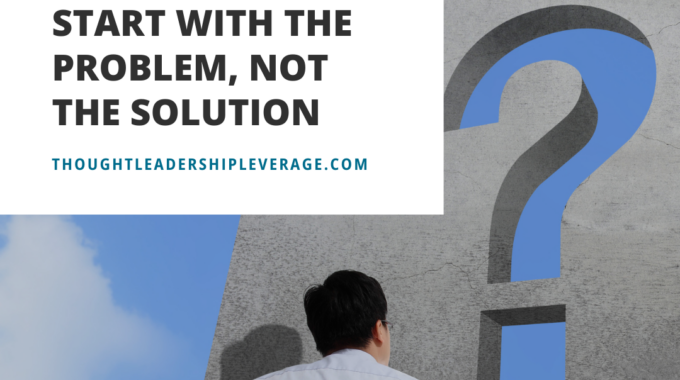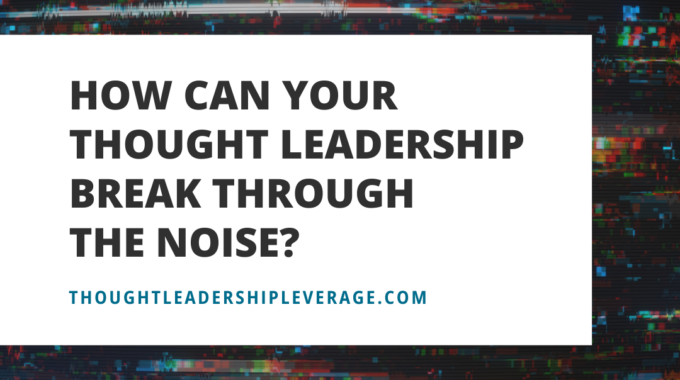Hey, thought leaders! I want to tell you about a powerful approach to thought leadership…
The Products Thought Leadership Clients Wish You Offered
Don’t build product in a vacuum! The best way to create a product that will raise demand, get attention, and actively help people solve problems is to first talk to the audience you’re trying to reach.
Gather smart people who both know your content and would use your product.
Spend a day or two with a whiteboard, come up with brilliant ideas that you think can take over the world, and really listen to your teams and your advisers. What does the market need? What do actual buyers and users of your content want – and at what cost? From a buyer’s perspective, what problems can you solve that are big enough that a client would be willing to commit dollars to solve? Simply put, you need a testing process that includes conversations with your clients.

Thought leaders must craft solutions at price points that will be attractive to the clients that need them.
Thought leaders must craft solutions at price points that will be attractive to the clients that need them. Let’s say they have a hundred-thousand-dollar problem. If you create a million-dollar solution, you’re going to lose the sale. You’ve priced yourself out of the market.
That’s why it’s often helpful to think not “total sale” price but instead focus on “cost per user” for your product. For a particular solution, you may say, “I can solve this for $50 per person,” and my buyers will be in. But if you build a solution that sells for $300 per person, those same buyers will be out. They’ll go elsewhere or make do with their current situation.
That’s why it’s so important to talk to you customers before you start building. It prevents you from making costly mistakes based on misconceptions and fragmentary information. Talking to your customers means figuring out what they care about in terms of content, pain points, and price sensitivity. You can make some inferences through smart online research; you can see what the market already supports. But when you’re crafting new product, you have to start with a lot of open-ended questions.
Remember going to an optometrist for an eye exam? You’re shown groups of slides and asked, “Which one looks better, A or B?” With each answer, the doctor starts dialing in until you have the perfect strength for your needs. Having real-world conversations with your buyers is the same process. You sharpen your focus until you know exactly what problems the client suffers, where they’re willing to commit resources, and what platforms they prefer.
It all comes down to knowing your clients, and listening to their needs. To be successful, a thought leader should engage with customers, look at user behavior, and adopt a fail-fast mindset. You have to listen to your audience, do small experiments, and have lots of conversations.
If you design product in a vacuum, you fail. Plain and simple.




